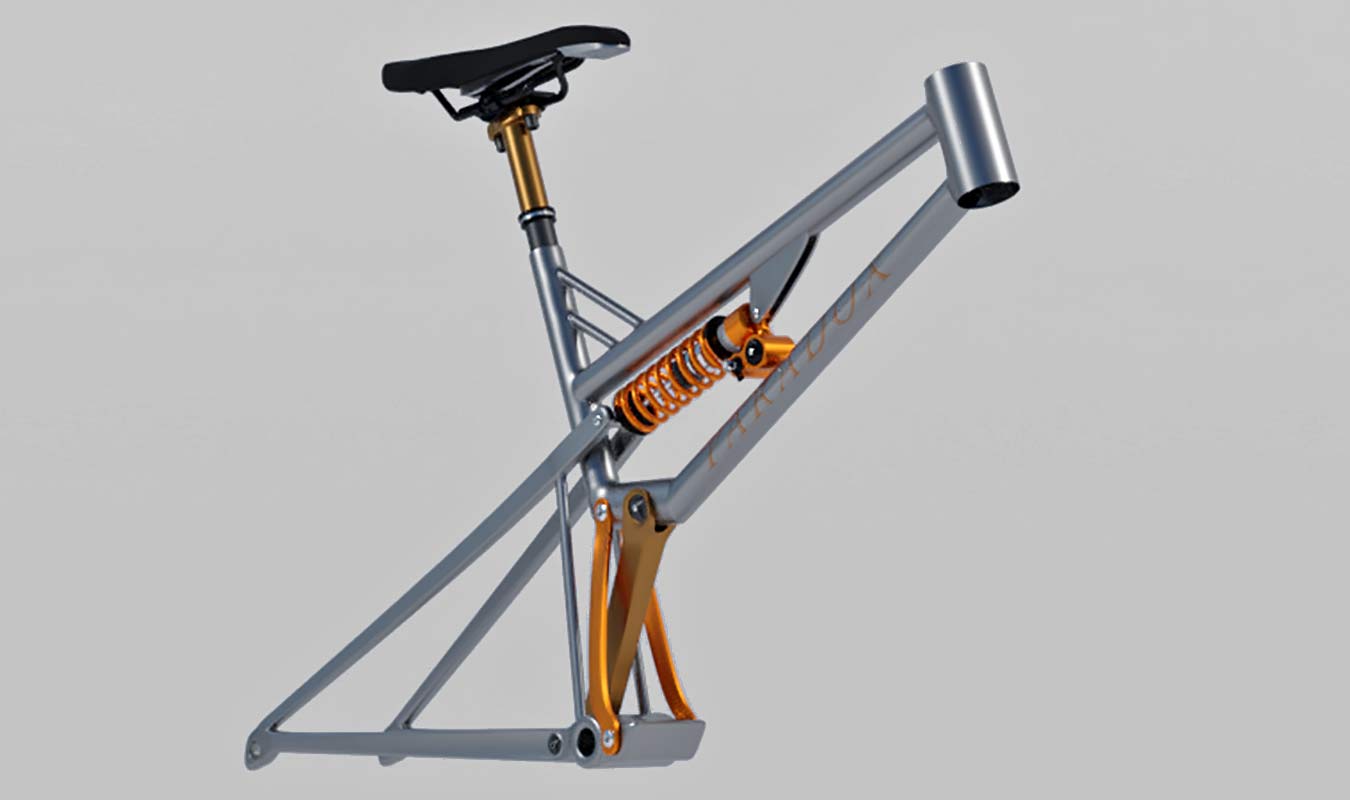Over the weekend this prototype Paradox mountain bike concept popped up on Kickstarter with an all-new approach to classic 4-bar suspension. By effectively crossing two linkages in the middle of the frame with a unified rear triangle strapped to the back, the Paradox Suspension concept promises an almost vertical rear axle path, zero drivetrain energy loss, and minimal bottom bracket movement under the rider.
The trick will be turning ideas into reality…
Paradox MTB suspension concept
https://www.kickstarter.com/projects/paradoxmountainbike/paradox-mountain-bike
Let’s start off with what this really is – a crowdfunding project by a mountain biker and amateur inventor who has a pretty unique idea that he wants to develop further into a working prototype. Bryan McFarland, a Connecticut State Park worker by day & tinker by night, developed and applied for patent protection for a new suspension design concept (not a bike, per se) and is raising money to turn that idea into a real-world, ridable prototype mountain bike.
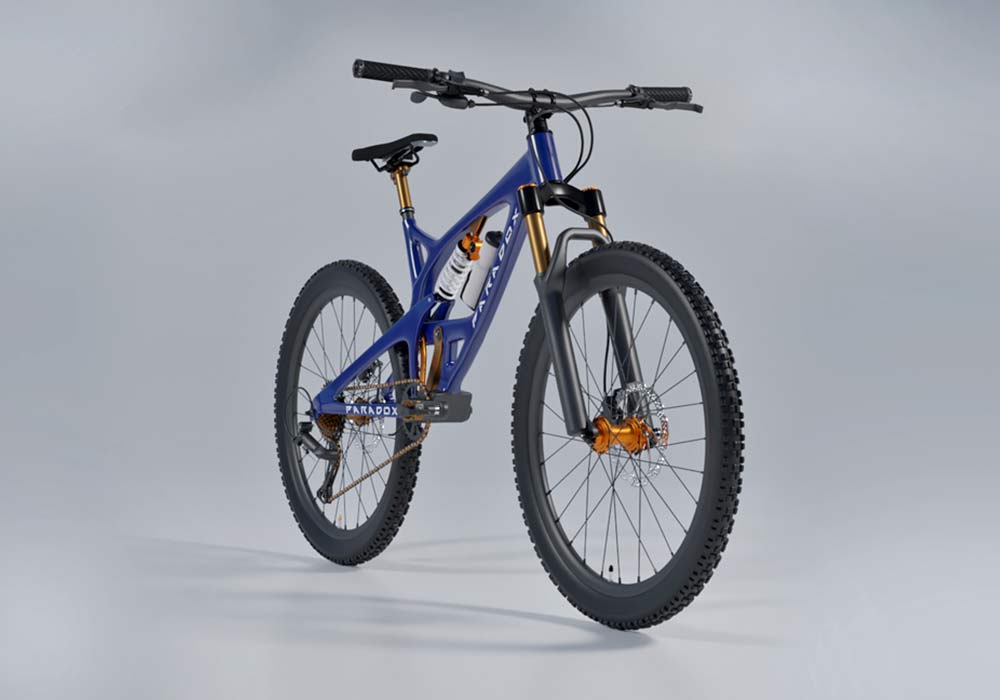
This is not a campaign that will end with you riding a new bike. In fact, the guy behind it makes it clear that he doesn’t want to give away trivial trinkets as rewards either. If you support the project, you’ll earn his heartfelt thanks, an e-book down the line detailing the project’s development if you want, or maybe a piece of his original artwork if you feel generous in your donations.
Why is crossing-link 4-bar URT suspension unique?
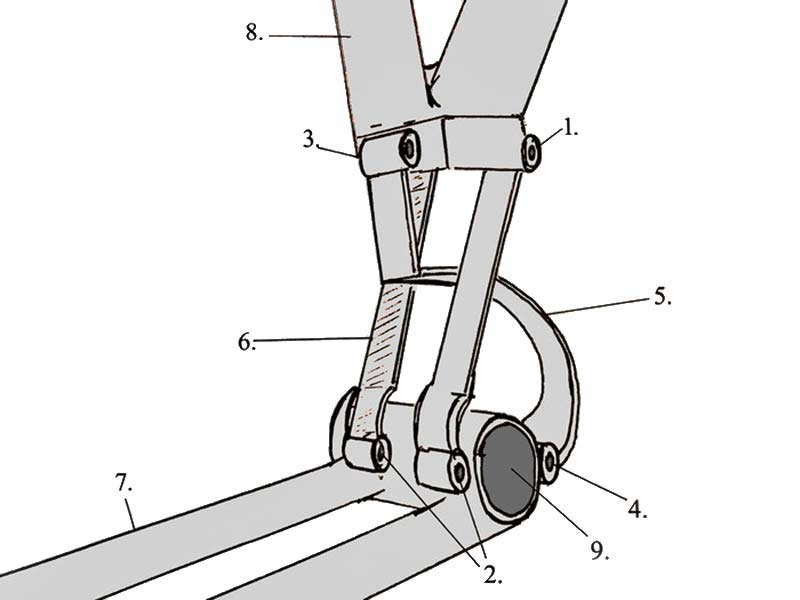
Various 4-bar suspension designs dominate the majority of modern full-suspension mountain bike bikes, probably for a couple of reasons. There are tons of ways to customize them to deliver efficient rear wheel movement with tunable suspension performance throughout their travel, manageable drivetrain efficiency, and controllable rider weight & braking impacts.
McFarland’s new design uniquely crosses those four bars with the bottom bracket in between the two lower pivots and the rear axle on the same bar, cantilevered out on a unified rear triangle that also drives the shock.
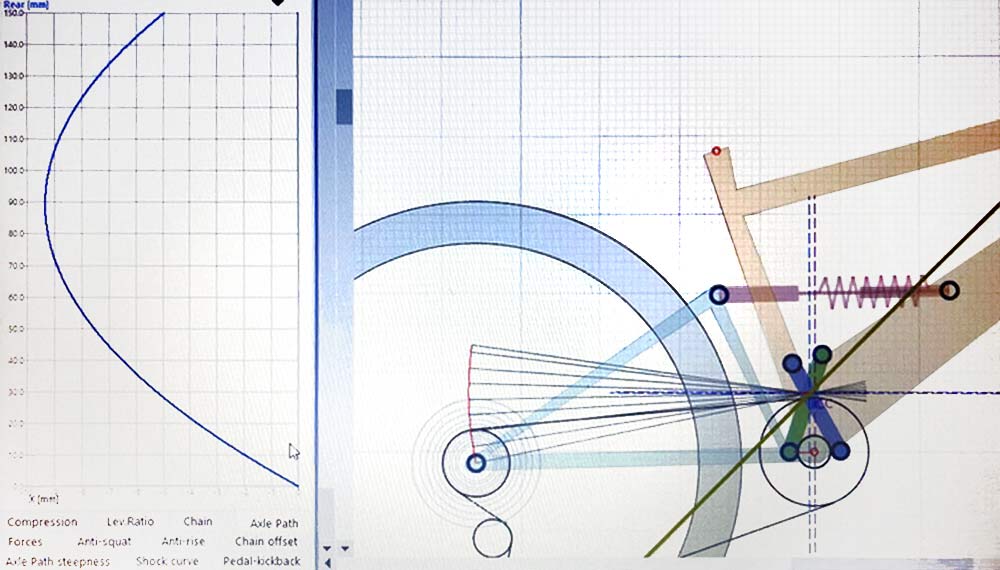
The result is a near-vertical arcing axle path to absorb rear wheel impacts. Bottom bracket movement is minimal, and restricted to a horizontal plane. Plus, there is also zero chain growth and no pedaling energy loss thanks to the URT.
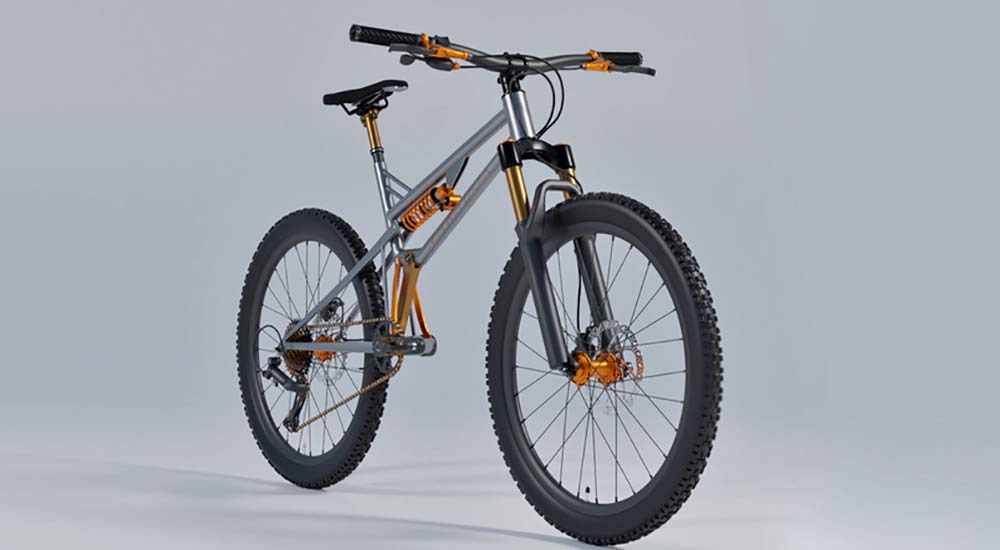
The downside is likely stiffness. The rear triangle URT would be stiff. But, the entire suspension relies on the two vertical linkages (red & blue, above) needing to rotate, curving one inside of the other, within the restricted space between the crankarms, chainring, and the rider’s legs. On top of that, the rear shock link is also an unsupported cantilever from the two lower pivots.
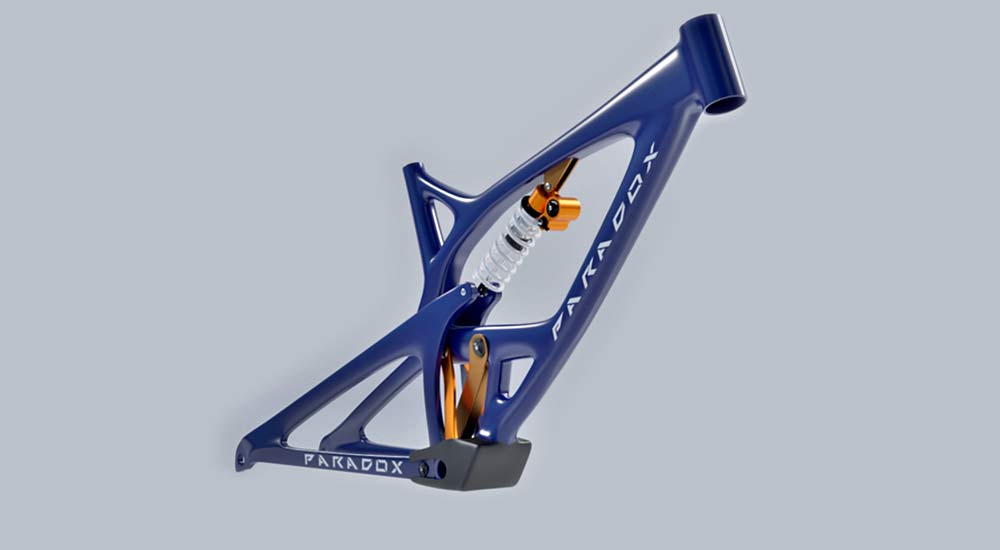
With all that said, McFarland has proposed an updated frame design concept with an extended down tube and a boxy protrusion at the bottom bracket that perhaps adds a slider channel to guide movement of the bottom bracket for additional stiffness.
In any case, this is really the point of the crowdfunding campaign – to raise funds to further design development, to build a test mule prototype to evaluate potential design optimization, and ultimately to build a working proof-of-concept prototype.
What’s next?
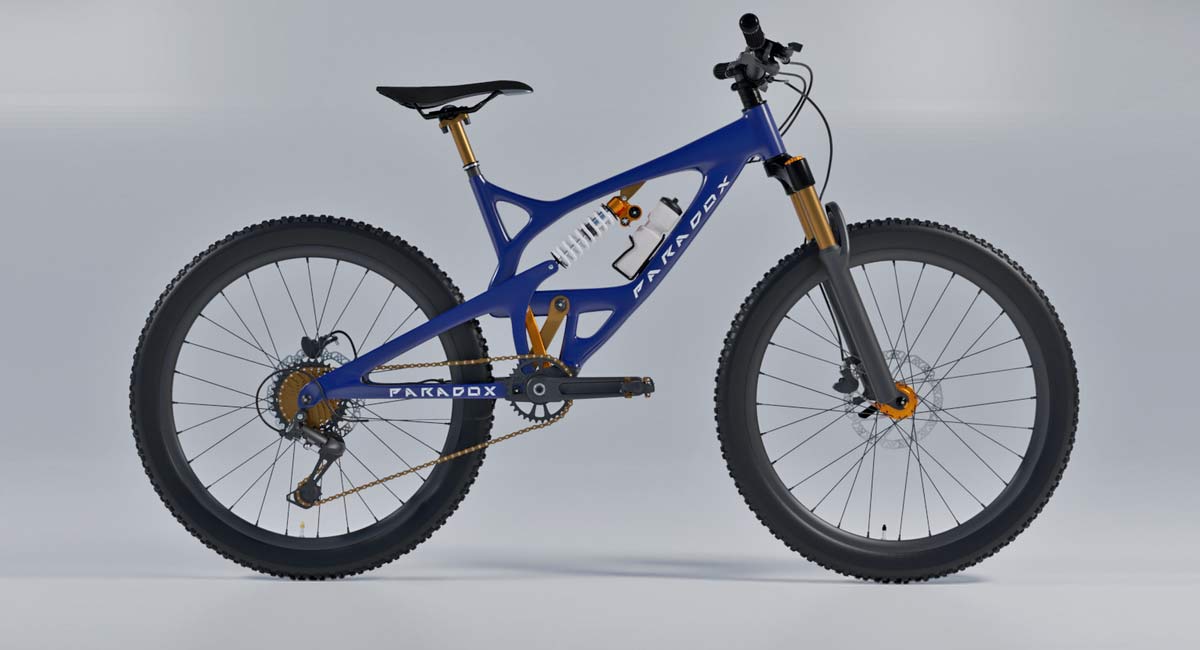
McFarland has the concept in place, and a provisional patent filed that protects the idea for 12 months to see how things pan out. He’s agreed with the mountain bike engineering specialists at Paul Hammerstrom Designs to make the concept into a buildable bike. And he’s lined up a local CT metal fabricator to build the test mule & working prototypes. All of that is on track to be completed in 2022. He just needs another $90k or so to make it happen.
Should you support the idea?
That’s harder to say. McFarland calls it a Paradox, “an apparently absurd proposition that when explained and tested proves to be well founded and true“. His goal now is to get the project to a point where he could either sell the idea to an established & interested mountain bike company to turn it into a bike you could buy, or see if it was worth establishing his own company. For now, it’s just an interesting idea that needs help getting off the ground.
via Kickstarter.com
